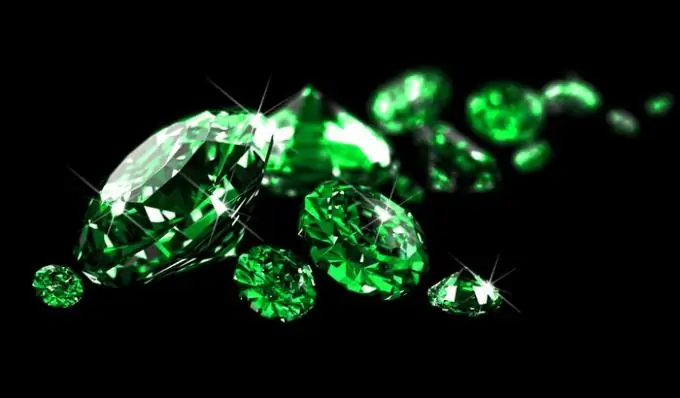- Author Nora Macey [email protected].
- Public 2023-12-16 10:17.
- Last modified 2025-01-23 08:47.
Often, under the guise of expensive and valuable natural emeralds, cheaper beryls, artificial stones grown in the laboratory, or even ordinary glass rhinestones are sold. Sometimes it is difficult to distinguish them, but real emeralds are less bright and shiny, they are more like green velvet, from which it is impossible to take your eyes off.

It is necessary
- emerald,
- magnifier,
- glass of water
Instructions
Step 1
If an emerald is framed, it is very difficult to distinguish an artificial from a natural one. First of all, you need to be guided by the price. A real stone is much more expensive, and large emeralds are fabulously expensive. Therefore, when you see a ring with a large stone at a reasonable price in a store, be on the lookout: this is probably a fake. Too shiny large stones are most likely ordinary glass jewelry.
Step 2
The more transparent the emerald, the higher its value. The muddy ones do not look so attractive, but the chances that the stones are real are much greater. Emeralds come in both light and dark colors. Among the light ones, clean and transparent ones come across quite often, therefore, if you buy a necklace or earrings in a respectable store, the danger of running into a fake is much less. Dark emeralds are much more expensive and can only be found in high-end jewelry boutiques.
Step 3
Determining the authenticity of a rimless stone is not so difficult. Take a good magnifying glass and look at the emerald from an angle. From this perspective, you can see the so-called growth lines of the stone. In an artificial emerald that was grown in a laboratory, these lines will be absolutely parallel. For a real stone, the lines should also be parallel, but not so orderly.
Step 4
When choosing a stone for a ring or pendant, you should pay attention to the color, not the purity of the emerald. Experts say that the very best dark emeralds should appear from a distance like chunks of soft green velvet. It is better to choose a stone of a dark shade, even if it has a blue or yellow hue and blotches inside. The presence of defects in the form of cracks, opaque spots and uneven color is precisely the key to the authenticity of the stone. Natural stones have inclusions in the form of pyrite crystals and mica microplates. Very bright stones may actually be beryls, green tourmalines, or peridots.
Step 5
Although bright emeralds are more appreciated, it is when choosing them that it is easy to run into a synthetic analogue. Such stones have a very rich color, often with a blue tint, however, such can be emeralds from Colombia. Hydrothermally grown synthetic stones have gaseous or liquid inclusions, in fact, these are non-jewelry beryls that are coated with a layer of artificial emerald. These are pale green stones with a lot of cracks, which, when immersed in water, become like a bright green outline. An outright fake, if you put it in a glass of water and look from above, will turn out to be reddish.






